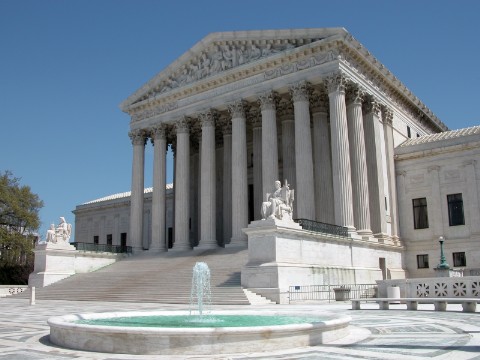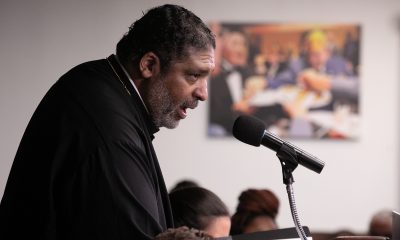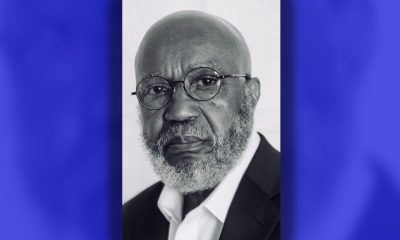Politics
Supreme Court Hears Michigan Challenge to Affirmative Action

By George E. Curry
NNPA Editor-in-Chief
WASHINGTON (NNPA) – Four months after the Supreme Court declined to invalidate affirmative action in a case brought against the University of Texas, it heard oral arguments to determine if a Michigan referendum violates the Equal Protection Clause of the 14th Amendment by amending the state constitution to prohibit the consideration of race, sex, color ethnicity or national origin in public university admissions decisions.
The case, Schuette v. Coalition to Defend Affirmative Action, was argued before the court on Oct. 15. While the case is not exclusively about affirmative action, it will determine whether Michigan and other states with similar bans can outlaw affirmative action through statewide initiatives rather than judicial channels.
Michigan is becoming the battleground for affirmative action in the Supreme Court. In 2003, the court ruled on two cases involving the University of Michigan. In Grutter v. Bollinger, the court approved the University of Michigan Law School admissions program that considered race within “the individualized, holistic review of each applicant’s file.”
However, in Grutter v. Bollinger, the court invalidated the undergraduate affirmative action program that assigned specific points for race.
Although the conservative John Roberts court has appeared to be eager to review cases that provide it an opportunity to severely restrict affirmative action in higher education, it was compelled to enter this fray because of two conflicting decisions by different federal appeals courts (6th and 9th), which rank second in power to only the Supreme Court.
If the court overturns the Michigan ban, it won’t be the first time it has invalidated a popular citizen initiative. In 1969 (Hunter v. Erickson), the Supreme Court struck down a change in the city charter of Akron, Ohio that made it harder to implement housing policies that assisted people of color. In 1982 (Washington v. Seattle School District No. 1), the court nullified a voter approved ban prohibiting the use of busing for desegregation.
At the other extreme, the court also upheld a California constitutional amendment (Crawford v. Los Angeles Board of Education) in 1982 that prohibited state courts from ordering pupil reassignment and bussing unless it was required under the Equal Protection Clause of the 14th Amendment.
Attorneys on both sides spent a considerable amount of time in their briefs and in oral arguments trying to show how the Seattle and Los Angeles rulings applies – or does not apply – to their respective positions.
The court’s ruling in this case will affect Michigan and five other states – California, Arizona, Nebraska, Oklahoma and Washington – that have similar bans. Justice Elena Kagan has recused herself from the case, presumably because of her work on the case in 2009 as U.S. Solicitor General. If the court deadlocks 4-4, the 6th Circuit Appeals Court ruling overturning the Michigan ban would become the governing law.
In 1996, California voters approved Proposition 209, a ballot initiative that amended the state constitution to prohibit state government institutions from considering race, sex, or ethnicity, in the areas of public employment, public contracting or public education. The U.S. Court of Appeals for the 9th Circuit let stand lower court rulings upholding the constitutionality of Prop 209.
Ward Connerly, a Black conservative who had helped spearhead the anti-affirmative action measure in California, helped organize a similar drive in Michigan with the aid of Jennifer Gratz, the lead plaintiff in the 2003 Grantz v. Bollinger decision that found the University of Michigan’s undergraduate affirmative action program relied too much on race.
Michigan’s Proposal 2, modeled after the California ban, was passed by Michigan voters in November 2006 by a vote of 58 percent to 42 percent. Although the ballot initiative outlaws all special consideration of race, sex, color, ethnicity or national origin in public employment, education and contracting, the issue before the Supreme Court pertains only to the application of race in the university admissions process.
According to Michigan Solicitor General John J. Bursch, who is representing Attorney General Bill Schuette in the proceedings, the issue before the court isn’t about race per se.
Responding to Justice Sonia Sotomayor, Bursch said, “But our point isn’t to get into a debate about whether preferences are a good or a bad thing, because that’s not what this case is about. The question is whether the people of Michigan have the choice through the democratic process to accept this court’s invitation in Grutter to try race-neutral means.”
Sotomayor, the most aggressive defender of affirmative action during the oral arguments, said, “I thought that in Grutter, all the social scientists had pointed out to the fact that all of those efforts had failed. That’s one of the reasons why the – I think it was a law school claim in Michigan was upheld.”
In their brief, the Coalition to Defend Affirmative Action, Integration and Immigrant Rights; Fight for Equity By Any Means Necessary (BAMN) and Chase M. Cantrell, et al., argued that the 14th Amendment does not permit Michigan voters to selectively distort the decision-making process.
“As enacted, Proposal 2 manipulates the political process by imposing distinctively disadvantageous barriers upon proponents of permissible policies under the Fourteenth Amendment incorporating consideration of racial identity and background, but favors – indeed mandates – policies that bar taking race into account.
“State more specifically, Proposal 2 rigs the political process against race-based policies that favor diversity so as to systematically endorse race-based policies that disfavor racial diversity by discriminatorily recalibrating the rules of governmental decisionmaking.”
Justice Sotomayor seemed to accept that argument in court when she told Bursch, “..This amendment is stopping the political process. It’s saying the board of regents can do everything else in the field of education except this one.”
On the other hand, Justice Samuel Alito appeared to side with the Michigan attorney general.
“Well, I thought the whole purpose of strict scrutiny was to say if you want to talk about race, you have a much higher hurdle to climb than if you want to talk about something else.”
One of the sharpest exchanges took place between Antonin Scalia and Shanta Driver, an attorney for the Coalition to Defend Affirmative Action.
DRIVER: We ask this Court to uphold the Sixth Circuit decision to reaffirm the doctrine that’s expressed in Hunter-Seattle, and to bring the 14th Amendment back to its original purpose and meaning, which is to protect minority rights against a white majority, which did not occur in this case.
SCALIA: My goodness, I thought we’ve – we’ve held that the 14th Amendment protects all races. I mean, that was the argument in the early years, that it protected only — only the blacks. But I thought we rejected that. You – you say now that we have to proceed as though its purpose is not to protect whites, only to protect minorities?
DRIVER: I think it is – it’s a measure that’s an antidiscrimination measure.
SCALIA: Right.
DRIVER: And it’s a measure in which the question of discrimination is determined not just by – by power, by who has privilege in this society, and those minorities that are oppressed, be they religious or racial, need protection from a more privileged majority.
SCALIA: And unless that exists, the 14th Amendment is not violated; is that right? So if you have a banding together of various minority groups who discriminate against – against whites, that’s okay?
DRIVER: I think that -
SCALIA: Do you have any case of ours that propounds that view of the 14th Amendment,
that it protects only minorities? Any case?
DRIVER: No case of yours.
After questioning by Justices Stephen Breyer and Samuel Alito, Justice Sotomayor carefully guided Driver back to the core of her argument.
SOTOMAYOR:… I thought the line was a very simple one, which is if the normal academic decision-making is in the dean, the faculty, at whatever level, as long as the normal right to control is being exercised, then that person could change the decision. So if they delegate most admissions decisions, as I understand from the record, to the faculty, but they still regularly, besides race, veto some of those decisions, and race is now one of them, then the Board of Regents can do that normally. So could the president, if that’s the way it’s normally done. It’s when the process is – political process has changed specifically and only for race, as a constitutional amendment here was intended to do, that the political doctrine is violated. Have I restated?
DRIVER: You have, you restated it very well, and I agree with you in principle.
Supporters of affirmative action are hoping to use a Supreme Court will rely on its precedents, especially the one involving Seattle, as the basis for overturning the Michigan referendum.
A brief of opposition joined by the NAACP Legal Defense and Educational Fund, the ACLU Foundation and others stated, “Blacks and other citizens had won school board approval of a busing plan to lessen the de facto segregation in Seattle’s public schools. White citizens then waged a successful campaign to pass a statewide initiative prohibiting school boards from using busing to achieve racial integration, while permitting the use of busing for a number of other purposes. The Court again held that a state could not selectively gerrymander the political process to impose more onerous political burdens on those seeking to promote racial integration than it imposed on those pursuing other policy agendas.”
###








































